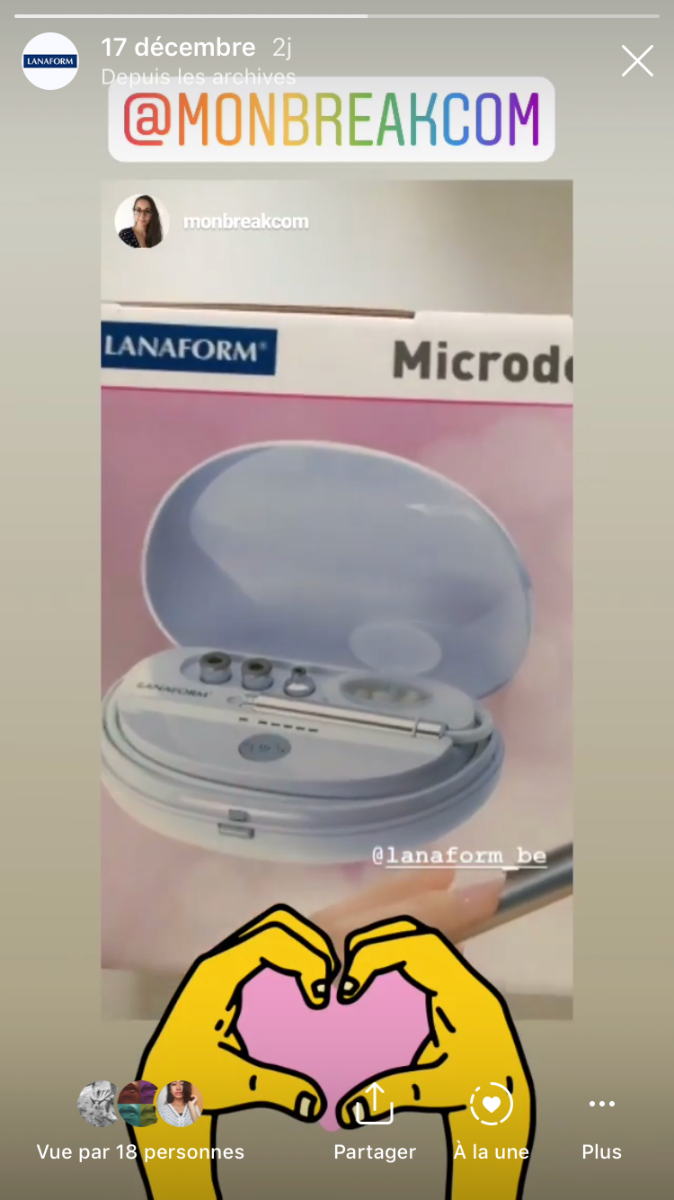A professional peel at home: dermabrasion

As the cold returns, you can feel that your skin has become more sensitive to the changes in temperature. In winter, your face is affected more by harmful external effects and dryness. Your complexion becomes pale and lifeless. You like to be pampered during the long winter evenings, and your skin needs a bit of looking after as well. You can do this with a good face care routine, of which dermabrasion is a part. Explanations and testing by mother and author of blog Mon-Break.com.
Dermabrasion, recommended face care for winter?
At this time of year, our spirits are low and our immune system is weak. And our faces reflect this feeling of not being 100%. This is because the cold, dry air makes the skin less vascularised - its blood vessels contract to limit heat loss. It is dry, itchiness and redness can appear, and cellular regeneration is disrupted. In short, it needs feeding. But don’t bother waiting for the good weather to make a comeback before you deal with it - winter is the ideal time for a makeover before the summer returns. To do this, cleanse your skin gently and, ABOVE ALL, don’t forget to peel. Bonus: in winter, there’s no risk of pigmentation caused by the sun.
Remember the essential steps for effective natural face care.
Dermabrasion – the next generation in peeling!
Dermabrasion is the stage in the face care routine that will help you get rid of the surface layer of the epidermis and, in certain cases, can go as deep as the upper dermis. It is an important stage as, once this layer of skin has been removed, the new skin can begin to regenerate itself through the natural phenomenon of healing. So you will be rid of the dead cells that blemish your complexion and the cellular rejuvenation of your skin will be reactivated.
Results of regular use of dermabrasion:
After using this method of face care once or twice a week for 28 days, you will notice:
- an improvement in the look of your skin
- a reduction in blemishes, the presence of wrinkles and fine lines, spots, blackheads and signs of tiredness.
- your skin will absorb your moisturiser better.
Your complexion will look radiant, nourished and homogeneous, and the pores in your skin will be tight; blemishes will have faded and fine lines are smoothed. Not bad, eh?
We asked Stéphanie, a mother and writer of lifestyle blog mon-break.com, to test Microdermabrasion for us. We gathered her first impressions for you and asked why dermabrasion was of interest to her as a face care technique.
How regularly do you peel and how do you do it?
I must admit that I've been a little lazy with face care lately. When I am diligent, I exfoliate 2 to 4 times a month, using a grainy scrub.
What types of skin problem do you encounter in winter?
My skin is more sensitive in the cold and redness can appear on my cheeks. And if I don't hydrate my body enough, I can get dry patches that cause unpleasant, even painful itching.
You tried Microdermabrasion for the first time, what did you think of it?
I was very intrigued when I used it for the first time! It took a few goes on my face to find the tip that suits me best (precision) and to be able to do the movements correctly.
It’s very easy to use and does not require charging or preheating, so you can use it whenever you want without having to get anything ready, and that's great!
What effects did you feel on your skin during and after the test?
During the test, nothing special. You feel a slight amount of suction and I wondered if it was working properly. I must admit that, when I saw the sapphire tips, I was afraid that it would be painful or unpleasant for the skin, but it’s not at all! After the test, I noticed that my skin was much smoother to the touch and it was also clearer.
How about you? Are you going to include dermabrasion in your skin care routine?

 DE
DE  FR
FR  NL
NL  EN
EN 







